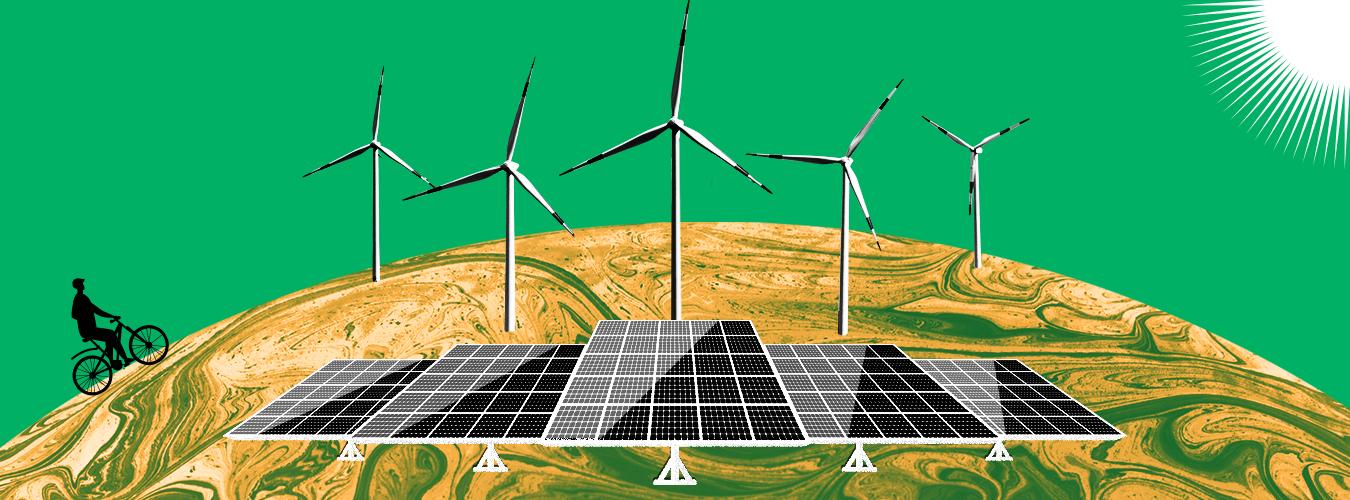By Faith Jemosop
As the world races to meet its renewable energy targets by 2030, Africa’s sluggish transition threatens to derail the entire effort. While many regions are accelerating solar, wind, and green hydrogen development, Africa remains burdened by underinvestment, political instability, weak infrastructure, and energy poverty. This continent home to 60% of the world’s best solar potential could either be the missing piece in solving the global energy puzzle or the reason it falls apart.
Africa’s Role in the Global Renewable Equation
Africa is central to the global renewable equation. According to the International Renewable Energy Agency (IRENA), global renewable energy capacity needs to triple by 2030 to keep the 1.5°C climate target alive. Africa’s contribution is essential:
- It holds over 1,000 GW of untapped solar capacity.
- Its wind corridors, particularly in North and East Africa, could generate over 300 GW.
- Green hydrogen prospects in Namibia, Egypt, and South Africa could supply Europe and Asia.
Without meaningful progress from Africa, the global supply-demand balance of clean energy could collapse, forcing countries to fall back on fossil fuels.
Despite its potential, Africa accounts for less than 2% of global renewable energy investments. Several barriers explain this slow pace:
1. Financing Gaps
Renewable energy projects in Africa are seen as risky due to unstable regulatory frameworks, currency volatility, and weak credit markets. Investors demand high returns or avoid the region entirely. In 2022, only $4.8 billion flowed into African renewables, compared to $495 billion globally.
2. Grid Infrastructure Weakness
Most countries in Africa lack modern, stable grids. Even where solar and wind projects are built, there’s often no way to deliver power to the population. Over 600 million Africans still lack access to electricity, which limits the ability to scale renewables profitably.
3. Policy Inconsistency
Many African governments have renewable energy plans on paper, but weak enforcement, corruption, and sudden policy reversals discourage long-term investment. For instance, Nigeria has had several mini-grid regulations since 2016, but implementation lags due to bureaucratic bottlenecks.
4. Overreliance on Fossil Fuels and Dams
Some African nations continue to invest heavily in natural gas and large hydroelectric projects, seeing them as more reliable. But these don’t align with global net-zero pathways. Large dams also face criticism for displacing communities and damaging ecosystems.
The Global Ripple Effect
When Africa falls behind, the world feels the ripple effect in three major ways:
A. Missed Emissions Targets
Africa may contribute only 3–4% of global emissions today, but its population is projected to double by 2050. Without a renewable energy base, future demand will be met by diesel, coal, or gas, worsening emissions globally.
B. Green Supply Chain Disruption
Africa has key minerals like cobalt, lithium, and rare earths, crucial for solar panels and electric vehicle batteries. A weak African renewable ecosystem will hinder global clean tech supply chains, driving up costs and delays.
C. Energy Security Imbalances
Europe, struggling to cut Russian energy dependence, has pinned hopes on green hydrogen imports from Africa. But slow progress means these targets won’t be met in time, forcing Europe and others to pursue costly alternatives.
Also read: Why Africa’s Renewable Energy Boom Could Fail Without Transmission Lines
There are bright spots, but they remain exceptions:
- Morocco has emerged as a solar leader with its Noor Ouarzazate Solar Complex, one of the largest in the world.
- Kenya gets over 90% of its power from renewables, including wind from the Lake Turkana Wind Project.
- Namibia and Egypt are launching green hydrogen pilots with German and Dutch partners.
However, these are drops in the ocean. To meet global goals, Africa needs tenfold growth in renewable capacity by 2030.
What Needs to Change?
To avoid derailing global targets, urgent measures must be taken by both African leaders and international stakeholders:
1. Innovative Financing Models
Blended finance, risk guarantees, and concessional loans must be expanded. Institutions like the African Development Bank and the World Bank need to derisk investments to attract private capital.
2. Decentralized Solutions
Mini-grids and solar home systems can provide energy access faster than national grids. Scaling such solutions will require subsidies, training, and regulatory support. Countries like Rwanda and Ethiopia are already showing progress in this space.
3. Stronger Public-Private Partnerships
African governments must partner transparently with local and international companies. Policies must ensure fair competition, clear tariffs, and long-term clarity. South Africa’s REIPPPP model is a strong example of successful procurement.
4. Capacity Building and Skills Transfer
Local engineers, technicians, and planners need training and involvement in project implementation. Without local capacity, countries will remain dependent on expensive foreign contractors.
5. Integrated Continental Planning
Regional power pools like the Eastern Africa Power Pool (EAPP) and West African Power Pool (WAPP) must be strengthened to allow cross-border trade in clean electricity. This boosts efficiency and attracts larger investments.
Also read: Why Costly Batteries Are Slowing Down Car & General’s Electric Tuk-Tuk Sales in East Africa
The global community must also recognize the climate justice dimension. Africa contributes least to global warming but suffers the most from its impacts, droughts, floods, and food insecurity. Denying Africa the tools to build a renewable future not only stalls global targets but deepens inequality. Fair climate finance, technology transfer, and debt relief must accompany calls for clean energy expansion.



